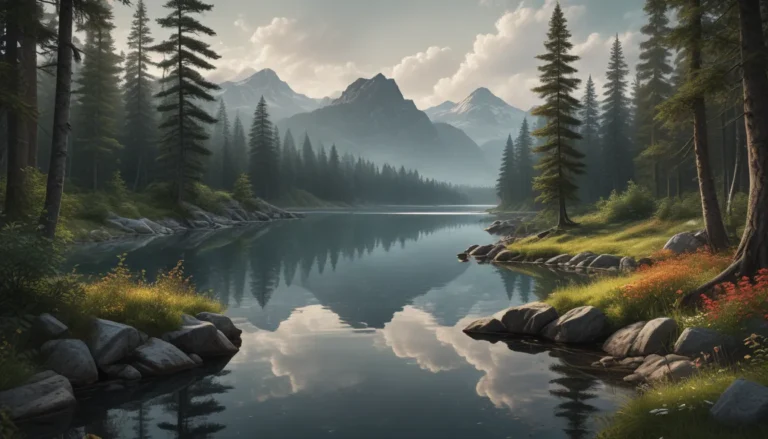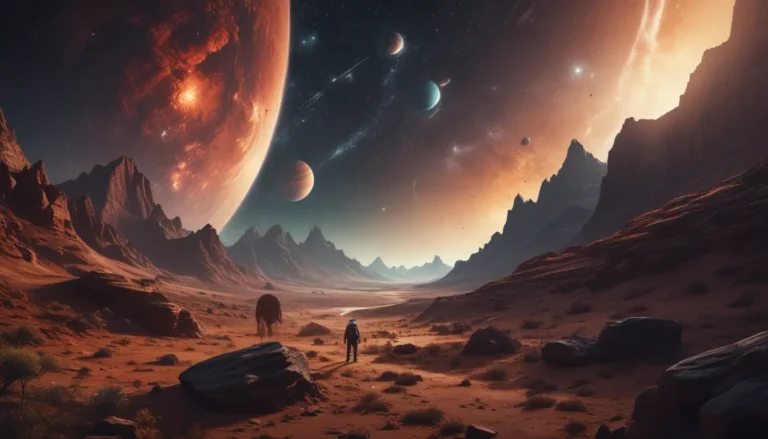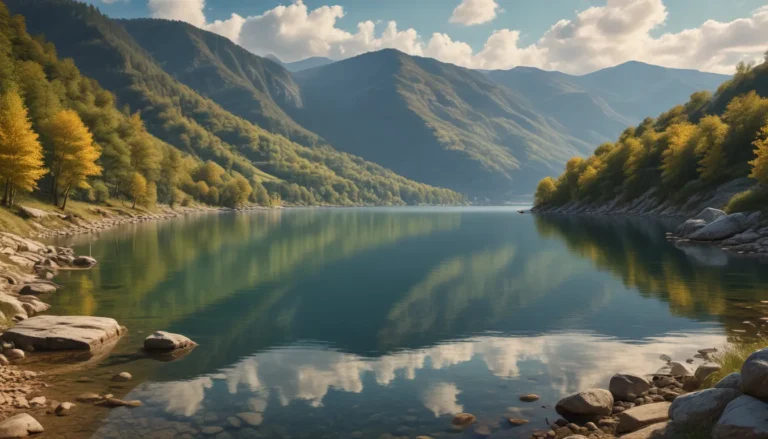The pictures we use in our articles might not show exactly what the words say. We choose these pictures to make you interested in reading more. The pictures work together with the words but don’t take their place. The words still tell you the important facts.
Craters, those captivating celestial features dotting the landscapes of planets and moons, have enraptured scientists and stargazers alike for centuries. From the moon's vast pockmarked surface to the striking impact sites on Mars, craters offer a mesmerizing glimpse into the tumultuous history of our solar system. Join us on an exhilarating journey through space and time as we unearth 12 extraordinary facts about these cosmic phenomena that will leave you in awe of their celestial significance.
Exploring Cosmic Scars: The Intriguing World of Craters
Craters are like cosmic scars, revealing a history of dramatic events that have shaped celestial bodies over millions, if not billions, of years. These impact features provide valuable insights into the geological processes that have molded planets, moons, and asteroids. Beyond their geological significance, craters hold secrets of ancient water and resources, making them potential stepping stones for future space exploration missions.
Understanding Craters: From Formation to Significance
-
The Moon's Enormous Crater: The Moon boasts one of the largest known craters in the solar system—the South Pole-Aitken Basin. This colossal impact site spans approximately 2,500 kilometers in diameter and is believed to have formed around 4 billion years ago.
-
Formation by Various Objects: Craters can be formed by a variety of celestial objects, including asteroids, comets, meteorites, and space debris. These impacting bodies collide with planetary surfaces, leaving behind distinctive circular depressions known as craters.
-
Impressive Earthly Example: Meteor Crater in Arizona, USA, stands as a remarkable example of an impact crater on Earth. With a diameter of approximately 1.2 kilometers and a depth of 170 meters, this crater was created around 50,000 years ago by a collision with an iron-nickel meteorite.
-
Valuable Geological Insights: By studying the size, shape, and composition of craters, scientists can glean valuable information about the geological history of celestial bodies. Craters serve as windows into the past, providing clues to the processes that have shaped the surfaces of planets, moons, and asteroids.
Delving Deeper: Unveiling the Mysteries of Crater Features
-
Central Peaks and Uplifted Rims: The intense energy released during an impact event can result in the formation of central peaks within craters. Additionally, some craters exhibit uplifted rims, creating captivating geological features that offer further insights into the collision dynamics.
-
Secondary Impacts: Craters can give rise to secondary impacts when debris ejected during the primary collision strikes neighboring celestial bodies. These secondary impact craters add complexity to the impact history of a planetary surface.
-
Varied Shapes and Angles: The shape of a crater can vary depending on the angle of impact, with oblique impacts often resulting in elliptical or asymmetrical craters. By analyzing these shapes, scientists can deduce crucial details about the speed and angle of the impacting objects.
Tracing Impact Events: Key Moments in Crater History
-
Barringer Crater in Arizona: Commonly known as Meteor Crater, this impact site in Arizona was named after Daniel Barringer, who first proposed its meteoritic origin. Today, it stands as a popular tourist attraction, offering visitors a closer look at the remnants of an ancient impact event.
-
Extinction of Dinosaurs: The Chicxulub crater in present-day Mexico is famously linked to the mass extinction event that wiped out the dinosaurs 66 million years ago. This crater serves as a poignant reminder of the catastrophic consequences of celestial impacts on Earth's ecosystems.
Unveiling Planetary Secrets: The Significance of Craters
-
Water Retention and Resources: Craters can act as natural basins, retaining water on planetary surfaces. Some craters on the Moon and Mars have been found to harbor ice deposits, presenting valuable resources for future human missions to these celestial bodies.
-
Honoring Exploration Pioneers: Craters on various celestial bodies are often named after influential scientists, astronauts, and notable landmarks. This tradition pays tribute to the individuals and achievements that have propelled our understanding of the cosmos.
-
Legacy of Collisions: Collisions during the early days of the solar system played a pivotal role in the formation of numerous craters across planets, moons, and asteroids. These impact events have left a lasting legacy, shaping the surfaces of celestial bodies and offering insights into their dynamic histories.
Conclusion: Embracing the Mysteries of Craters
In conclusion, craters stand as extraordinary features that illuminate the geological and cosmic history of our universe. Whether gazing at the vast lunar landscapes or contemplating the Martian impact sites, each crater tells a unique story of cosmic collisions and planetary evolution. As scientific advancements in technology and space exploration progress, our understanding of craters continues to expand, uncovering more extraordinary facts and revealing the secrets of our cosmic neighbors.
Unlocking Crater Enigmas: Engage in Exploration
Craters, with their captivating allure and profound mysteries, beckon us to unravel their secrets and embark on journeys of discovery. From volcanic landscapes to icy repositories, each crater offers a gateway to understanding the dynamic interactions that have shaped our solar system. Embrace the wonder of cosmic scars and delve into the cosmic tapestry of craters, where each discovery promises to inspire awe and ignite the spirit of exploration.
Was this page helpful?
Our dedication to delivering credible and engaging content is at the core of our mission. Each fact shared on our site is a result of contributions from real users like you, enriching our platform with diverse insights and information. Rest assured, our diligent editors meticulously review each submission to ensure accuracy and reliability. Trust in our unwavering commitment to quality as you embark on your journey of exploration and discovery with us.






